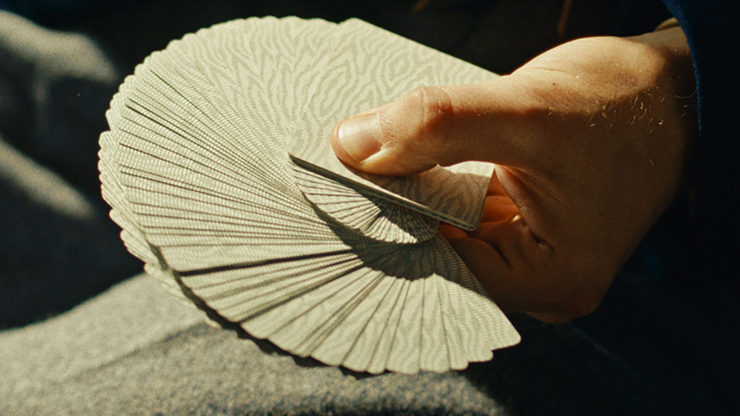
How to learn magic tricks fast
Share
Here's a complete, fast-track blueprint to learn magic tricks quickly while building real performance skill, not just collecting tricks.
Who this is for
- Beginners and returning hobbyists wanting a structured 2–4 week plan to perform confidently for real people.
- Busy learners who prefer short, focused practice sessions that compound fast.
The 2–4 week plan
- Week 1: Pick one area (card magic tricks, mentalism, or coins), learn 2 self-working or low-sleight routines, and script them from the start to accelerate smooth performance.
- Week 2: Add one foundational sleight and one new routine that uses it; record practice to correct tension and timing.
- Week 3: Rehearse a 5-minute set of 2–3 tricks, refine patter, add audience management beats, and gather feedback from 5–10 performances.
- Week 4: Plug gaps found from feedback, tighten transitions, and publish a "set list" doc for consistency and confidence.
Choose a focus fast
- Cards: Start with a self-working effect plus a routine needing a reliable double lift; cards are portable and offer quick wins.
- Coins: Learn a clean vanish (e.g., French Drop) and one transposition; coins build misdirection and hand conditioning early.
- Mentalism: Pick one strong, low-tech routine (e.g., Invisible Deck style effect) to feel powerful with minimal handling.
Three quick wins to perform in days
- Self‑working card mystery + scripted revelation for drama and clarity; scripting multiplies impact with no extra sleight difficulty.
- Coin vanish to pocket retrieval with time misdirection between phases to mask method.
- Prediction reveal using a stacked outcome and audience control to guarantee a clean climax.
Minimum viable practice system
- Two-a-day 10‑minute blocks: morning mechanics, evening run-throughs; short, slow drills beat marathon sessions for retention.
- Slow is fast: drill perfectly to avoid encoding errors, then add speed later—perfect practice compounds.
- Focus one move at a time for two weeks before rotating; avoid hopping between techniques.
Core sleights for speed
- Cards: push‑off double lift, overhand control, false shuffle; these unlock many strong routines fast.
- Coins: French Drop, classic palm conditioning, shuttle pass; keep shoulders and hands relaxed to prevent tells.
- General: master one force and one switch to expand trick variety without learning dozens of methods.
Script first, then polish
- Write patter beats for introduction, conflict, and reveal to reduce nerves and increase clarity.
- Mark misdirection cues in the script where eyes should leave the hands to protect the method.
- Record rehearsals to spot tension, head turns, and unnecessary moves that signal secret actions.
Perform early, learn faster
- "You don't learn magic until you do magic"—perform one trick for many people to accelerate real progress.
- Start with friendly audiences, then escalate conditions to cafes or office break rooms to harden nerves.
- Track reactions and stumbling points in a notebook to target practice with precision.
Build a 5-minute set
- Opener: easy, visual, low-risk routine to earn trust immediately.
- Middle: skill-focused piece showcasing a single sleight under cover of strong structure.
- Closer: prediction or impossible location with time delay to boost impossibility.
Avoid common speed traps
- Don't binge-learn dozens of secrets; depth beats breadth when learning fast.
- Don't practice tense; relax the body and keep eye contact during sleights to avoid tells.
- Don't skip books entirely; curated sources prevent bad habits and scattered progress.
Fast resource picks
- Structure and fundamentals: beginner magic primers that emphasize practice cadence and scripting.
- Sleight quality: concise tips on relaxation, focused drills, and 10‑minute routines for steady gains.
- Community calibration: forums and pro blogs for routine selection and practice structure ideas.
Sample daily schedule (15–25 minutes)
- 5–10 min: slow sleight drill with mirror or camera, focusing on relaxation and economy of motion.
- 5–10 min: run full routine with patter and eye contact, making the method invisible through timing.
- Optional 5 min: audience simulation—speak at performance volume, add pauses for laughs and gasps.
When to add complexity
- After 10–20 clean real‑world performances of a routine without tells, upgrade one element: method, structure, or presentation—not all three.
- Use recordings to verify naturalness before introducing a second sleight in the same routine.
- Keep set length constant while increasing effect strength to preserve confidence and pacing.
Quick troubleshooting
- Flashing the method: slow down, soften grip, and reframe gaze away from hands during secret actions.
- Shaky hands or nerves: lead with the self‑working piece to settle, then insert sleight‑based routine second.
- Forgetting lines: script bullet beats on a pocket card until muscle memory takes over.
Your fast-start checklist
- One focus area chosen (cards or coins), two tricks learned, one sleight selected.
- Script drafted with misdirection cues and transitions between tricks.
- Ten real performances booked with notes after each to guide iteration.